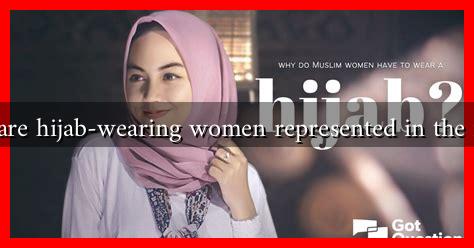-
Table of Contents
How Are Hijab-Wearing Women Represented in the Media?
The representation of hijab-wearing women in the media is a complex and multifaceted issue that reflects broader societal attitudes towards Islam, gender, and cultural identity. As the global discourse around Islam and Muslim women evolves, so too does the portrayal of hijab-wearing women in various media forms, including television, film, print, and social media. This article explores the nuances of this representation, highlighting both positive and negative portrayals, and the implications they have on public perception and individual identity.
The Stereotypes and Misconceptions
Historically, hijab-wearing women have often been depicted through a lens of stereotypes and misconceptions. Common portrayals include:
- Victims of Oppression: Many media narratives frame hijab-wearing women as oppressed or submissive, reinforcing the stereotype that they lack agency and autonomy.
- Exoticism: In some contexts, hijab-wearing women are portrayed as exotic or mysterious, which can perpetuate a sense of ‘otherness’ rather than fostering understanding.
- Radicalization: The media often links hijab-wearing women to extremism, suggesting that their choice to wear the hijab is indicative of radical beliefs.
These stereotypes can have damaging effects, contributing to Islamophobia and reinforcing negative perceptions of Muslim communities. A study by the Pew Research Center found that negative portrayals of Muslims in the media can lead to increased discrimination and social exclusion.
Positive Representations and Role Models
Despite the prevalence of negative stereotypes, there has been a growing movement towards more positive and nuanced representations of hijab-wearing women in the media. This shift can be attributed to several factors:
- Increased Visibility: The rise of social media platforms has allowed hijab-wearing women to share their stories and experiences, challenging mainstream narratives.
- Empowerment through Representation: Media figures such as Ibtihaj Muhammad, the first hijab-wearing woman to represent the United States in the Olympics, have become role models, showcasing strength and resilience.
- Diverse Narratives: Films and television shows are beginning to feature hijab-wearing women in diverse roles, from professionals to superheroes, thereby normalizing their presence in various contexts.
For instance, the Netflix series “Ms. Marvel” features Kamala Khan, a Pakistani-American teenager who wears a hijab, portraying her as a relatable and empowered character. This representation not only challenges stereotypes but also provides young Muslim girls with a positive role model.
The Impact of Representation on Identity
The way hijab-wearing women are represented in the media can significantly impact their self-identity and societal perceptions. Positive representation can lead to:
- Increased Self-Esteem: Seeing relatable characters in media can boost the self-esteem of hijab-wearing women, helping them embrace their identity.
- Fostering Understanding: Positive portrayals can help bridge cultural gaps, fostering understanding and acceptance among diverse communities.
- Encouraging Dialogue: Media representation can spark conversations about cultural diversity, gender equality, and religious freedom.
Conversely, negative portrayals can lead to internalized stigma and feelings of alienation among hijab-wearing women, making it crucial for media creators to approach representation thoughtfully.
Conclusion: The Path Forward
The representation of hijab-wearing women in the media is evolving, with both challenges and opportunities. While negative stereotypes persist, there is a growing recognition of the need for diverse and authentic portrayals. As media continues to shape public perception, it is essential for creators to engage with hijab-wearing women and include their voices in storytelling. By doing so, the media can contribute to a more inclusive society that values diversity and promotes understanding.
In summary, the representation of hijab-wearing women in the media is a reflection of broader societal attitudes. Positive portrayals can empower individuals and foster understanding, while negative stereotypes can perpetuate discrimination. As we move forward, it is vital to advocate for more nuanced and authentic representations that celebrate the diversity of hijab-wearing women and their experiences.

